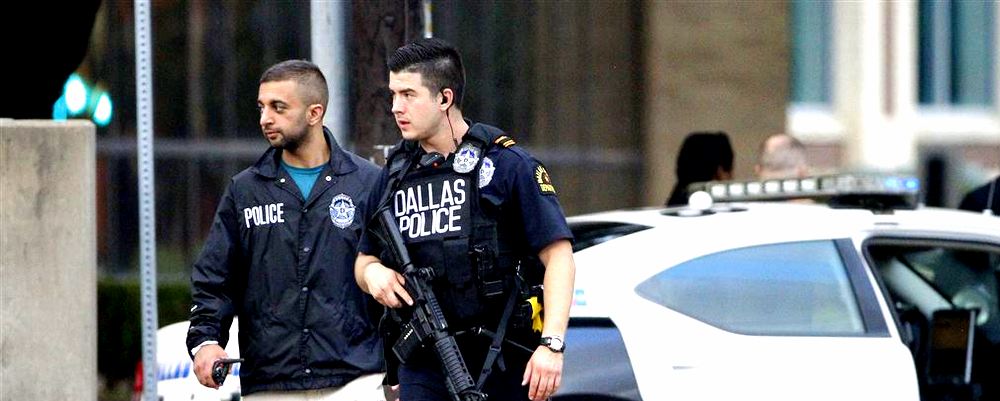“We’ve never seen a year in my memory when we’ve had an increase of this magnitude in officer shooting deaths,” Craig Floyd, president of the National Law Enforcement Officers Memorial Fund (NLEOMF), told the Associated Press on December 29, 2016.
By that date, NLEOMF had recorded 64 shooting deaths for the year, while 2015 saw just 41 firearm-related deaths. The Associated Press points out, “That’s a 56 percent increase in shooting deaths.”
On December 30, 2016, Pennsylvania State Trooper Landon E. Weaver was shot to death, bringing intentional, line-of-duty deaths from gunfire to 63 for the year (excluding two accidents).†
Twenty-one cops died in ambush-style shootings, including five officers killed by a sniper in Dallas and three killed by a gunman in Baton Rouge, both in July. Obviously, all of this is bad, and the Dallas attack, in particular, was the worst single day for American police since 9/11.
But is it really true that these numbers are unprecedented in recent memory?
Sorta.
Context for People Who Love Bad News
First, 2015 was one of the safest years for cops in US history. In fact, its 39 intentional shooting deaths were the third fewest — in absolute terms — of any year since the 1800s; only 1956 and 2013 had fewer. Starting from an unusually low level means that any increase will be magnified in percentage terms.
| Top 5 Safest Years for Police | ||
| Rank | Year | Shooting Deaths |
| #1 | 2013 | 31 |
| #2 | 1956 | 37 |
| #3 | 2015 | 39 |
| #4 | 2008 | 41 |
| #5 | 1943 | 43 |
Second, a look at recent history shows that 63 shooting deaths is high but not unprecedented. In 2011, 2008, and 2001, we saw 68, 67, and 65 officers shot to death, respectively.

Third, from 2013 to 2014, shooting deaths increased from 31 to 47 — a sizable increase of 52 percent. Media coverage then was similarly sensational.
Unusual Increase, Typical Change
In one way, the increase does stand out. The 24 death spike is the largest absolute increase in officer shooting deaths in a single year since the 1970s (1971 saw a spike of 32).
But it isn’t unheard of to see single-year changes — increases and decreases — in this range. In 2008, shooting deaths declined by 26. In 2012, shooting deaths declined by 20.
| Year | Shooting Deaths | Relative Change | Absolute Change |
| 2007 | 67 | 31% | 16 |
| 2008 | 41 | -39% | -26 |
| 2009 | 47 | 15% | 6 |
| 2010 | 59 | 26% | 12 |
| 2011 | 68 | 15% | 9 |
| 2012 | 48 | -29% | -20 |
| 2013 | 31 | -35% | -17 |
| 2014 | 47 | 52% | 16 |
| 2015 | 39 | -17% | -8 |
| 2016 | 63 | 62% | 24 |
But, for interesting psychological reasons, we tend to value (and hence remember) changes for the worse more than changes for the good. It wouldn’t be surprising if 2016 stands out in our memory and 2008 doesn’t.
Conclusion
Any way you look at it, 2016 was a bad year, but it wasn’t unprecedented. The jump from the prior year (the third safest in US law enforcement history) was in fact quite significant, driven largely by two ambush attacks that claimed eight lives.
But killings of police officers are few in number and highly variable. A couple multiple casualty attacks can dramatically change the picture, but attacks like Dallas are exceedingly rare. The actions of a lone sniper in Texas aren’t necessarily a sign that police work is becoming riskier and deadlier in general.
We should be cautious about drawing normative or policy conclusions from these bare statistics, either way. None of this means we shouldn’t be concerned about a large single-year spike, or that we shouldn’t keep an eye out for possible emerging trends, or that we shouldn’t take steps to make police work safer. But it does mean that we shouldn’t feel driven to panic or overreact, sensational press coverage notwithstanding.
Taking the long view, police are still much safer than they used to be — and, on average, the 2010s have been the safest decade for cops in more than a century.

In my next dispatch in this interminable series, I’ll discuss numbers from the latest Law Enforcement Officers Killed and Assaulted (LEOKA) report from the FBI.
† From here on, I use numbers from the Officer Down Memorial Page because 1) they distinguish between accidental and intentional gunfire deaths, and 2) they are up to date on Trooper Weaver’s death.

